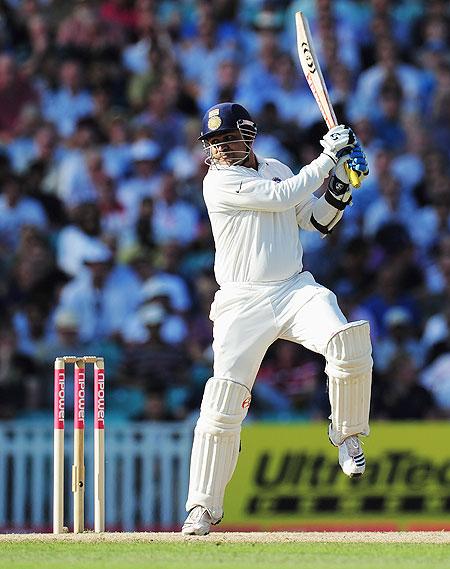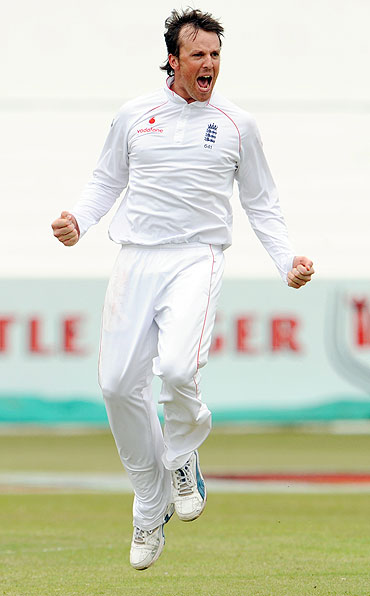 | « Back to article | Print this article |
Lost cause for England, a bad advert for Test cricket
Test matches played on Indian grounds have become predictable over the last few years. The flat wickets ensure the batsman has all the advantage and the bowler is there only to be hit.
The matches per se begin as high-scoring affairs and after a couple of days the wickets wear away and offer assistance to spinners.
In such a scenario, the toss becomes the most crucial aspect. Getting it right with the coin and opting to bat first is a sure-shot way of saving a match.
Yes, you heard it right. Saving a match, for winning is not exactly in your hands. The spinners do make a difference towards the end, but if the opposition batsmen show resilience they have every chance of eking out a draw.
This predictable path that most Test matches in India have followed over the last few years has only ensured ennui, and, of course, a lack of interest in the game's longer and more classical format.
Motera, as a venue, is no different from any other in the country. Five of the last seven Tests played there resulted in high-scoring draws.
The only time the curators did make an exception -- in the opening Test against South Africa in 2008 -- Team India had to pay a heavy price, suffering a heavy defeat inside three days.'We have to work hard to take their 20 wickets'
That result has refrained authorities from experimenting in the two subsequent Tests.
The opening Test between India and England also follows a similar trajectory. The wicket looked lifeless to begin with, and the moment MS Dhoni called it correctly, India ensured they won't lose the match (save a miracle).
The fact that they ended the opening day comfortably-placed at 323 for four made the end result even more certain.
With the wicket taking turn -- Graeme Swann took all the four Indian wickets -- Pragyan Ojha and R Ashwin should like their chances of getting a handful of wickets. Add to this the fact that the English batsmen have traditionally been susceptible to spin bowling, and the visitors' chances of even saving the match seem a distant dream.
Not quite, if Virender Sehwag is to be believed. Asked if Team India had the match in their bag after the opening day, the opener, who scored a magnificent 117, replied in the negative.
"I don't think so," he said.
"We have to work hard to take their 20 wickets," he continued, adding, "The England team is not like Bangladesh.
"They won't throw away their wickets for sure."
The 34-year-old albeit did admit that the wicket favours the home team.
'If you show some patience then you can score big'
"Wicket is turning a bit," said Sehwag, adding, "The ball will turn tomorrow and in the remaining days.
"There's some help for the spinners. If the bowler puts the ball in the right areas he can definitely get wickets."
Having said that the opener was quick to add that there was still a lot of runs on this wicket.
"Our first three batsmen got out trying to hit the ball," explained Sehwag, adding, "But if you block the ball then it is difficult to get out. If you show some patience then you can score big."
Sehwag's explanation notwithstanding, the manner in which the English quicks struggled on the day suggested Motera had nothing in it for the bowlers, at least the faster variety.
If the home team puts up a total in the excess of 500, it seems likely at this stage, the visitors would find it difficult to play the full five days, let alone save the match.
Such dull, drab and lifeless wickets, like Motera, might help out-of-form batsmen, like Sehwag -- he had not scored a Test hundred in two years -- get among the runs again. However, they are anything but a good advertisement for Test cricket.

